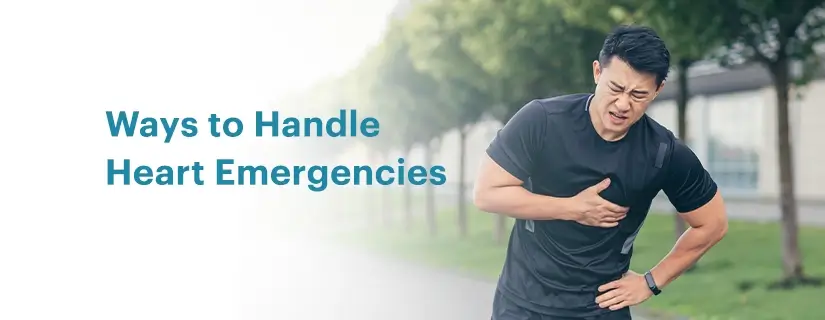-
Doctors
-
Specialities & Treatments
Centre of Excellence
Specialties
Treatments and Procedures
Hospitals & Directions HyderabadCARE Hospitals, Banjara Hills CARE Outpatient Centre, Banjara Hills CARE Hospitals, HITEC City CARE Hospitals, Nampally Gurunanak CARE Hospitals, Musheerabad CARE Hospitals Outpatient Centre, HITEC City CARE Hospitals, Malakpet
HyderabadCARE Hospitals, Banjara Hills CARE Outpatient Centre, Banjara Hills CARE Hospitals, HITEC City CARE Hospitals, Nampally Gurunanak CARE Hospitals, Musheerabad CARE Hospitals Outpatient Centre, HITEC City CARE Hospitals, Malakpet Raipur
Raipur
 Bhubaneswar
Bhubaneswar Visakhapatnam
Visakhapatnam
 Nagpur
Nagpur
 Indore
Indore
 Chh. Sambhajinagar
Chh. SambhajinagarClinics & Medical Centers
Book an AppointmentContact Us
Online Lab Reports
Book an Appointment
Consult Super-Specialist Doctors at CARE Hospitals
Internal Bleeding: Signs, Symptoms, Causes & Treatment
Updated on 8 April 2024
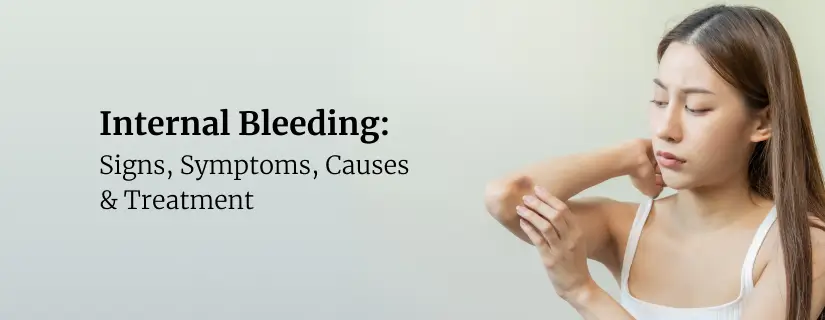
Internal bleeding happens when there is bleeding inside the body that is not visible on the outside. It is a medical emergency that requires immediate medical intervention. Unlike external bleeding, where blood flows visibly from the body, internal bleeding occurs internally, making it difficult to detect without medical intervention. It can happen anywhere in our body, organs, tissues, and cavities and may result from trauma, medical conditions, or underlying health issues. The consequences of internal bleeding can differ from mild manifestations to life-threatening situations, depending on the severity and location of the bleeding. Understanding its signs, symptoms, causes, and treatment options is crucial for timely medical intervention and improved outcomes.
Signs and Symptoms of Internal Bleeding
Recognising the signs and symptoms of internal bleeding is vital for prompt diagnosis and treatment. Some manifestations may be subtle or develop gradually, while others can be more pronounced. Specific indicators may vary depending on the location and extent of the bleed; some common internal bleeding symptoms include:
- Abdominal pain: Internal bleeding in the abdomen can cause severe pain, often described as a dull ache or cramping sensation. It may be accompanied by tenderness or rigidity in the affected area. Internal bleeding in the gastrointestinal system may cause nausea, vomiting, or bloody vomit.
- Generalised weakness and fatigue: Internal blood loss can lead to decreased oxygen-carrying capacity and blood pressure, resulting in weakness, fatigue, and lightheadedness.
- Bruising and swelling: Unexplained bruising or swelling on the body's surface may indicate internal bleeding. The accumulation of blood beneath the skin can cause discolouration or a raised bump.
- Changes in mental state: Internal bleeding in the brain can cause cognitive changes, including confusion, dizziness, or loss of consciousness. You should always pay attention to these symptoms and seek immediate medical attention.
- Difficulty breathing: Internal bleeding in the chest cavity or lungs may lead to shortness of breath or rapid breathing.
- Increased heart rate: Rapid heart rate or tachycardia may occur as the body compensates for decreased blood volume caused by bleeding.
- Blood in stool or urine: Internal bleeding in the digestive or urinary tract may manifest as blood in the stool or urine. This symptom can be alarming and should be evaluated by a healthcare professional.
- Cold, sweaty skin: Pale, cold, clammy skin can result from poor circulation due to significant blood loss.
Causes of Internal Bleeding
Several factors can cause internal bleeding, each requiring specific treatment approaches. Some common causes include:
- Trauma: Accidents, falls, or physical injuries are some of the common internal bleeding causes. Blunt force trauma, such as from a car accident or sports injury, can cause blood vessels to rupture, leading to internal bleeding.
- Gastrointestinal conditions: Certain gastrointestinal conditions, such as peptic ulcers, diverticulosis, or inflammatory bowel disease, can cause internal bleeding in the digestive tract.
- Medication and medical procedures: Certain medications, like blood thinners, can increase the risk of internal bleeding. Additionally, invasive medical procedures, such as surgeries or biopsies, carry a potential risk of internal bleeding.
- Organ rupture: The rupture of organs, such as the spleen or liver, can result in significant internal bleeding. It can occur due to trauma or underlying medical conditions.
- Liver Disorder: Liver diseases like cirrhosis can cause increased pressure in the veins (portal hypertension), leading to swollen veins that may rupture and cause internal bleeding.
- Bleeding disorder: Conditions such as haemophilia, thrombocytopenia, or Von Willebrand disease can impair the blood's ability to clot properly, increasing the risk of spontaneous internal bleeding.
- Vascular conditions: Certain blood vessel conditions, such as aneurysm or aortic dissection, can lead to internal bleeding within the wall of the blood vessels or aorta.
- Cancer: Certain cancers, such as colorectal cancer, stomach cancer, or leukaemia, can invade blood vessels or weaken tissues, resulting in internal bleeding.
Diagnosis of Internal Bleeding
Prompt diagnosis of internal bleeding is essential for effective management. Doctors employ various diagnostic tools and techniques to identify and locate internal bleeding, including:
- Medical history and physical examination: Doctors will inquire about the patient's symptoms, medical history, and any recent injuries or trauma. They will perform an in-depth physical examination to assess vital signs, check for internal bleeding signs, and evaluate the affected area.
- Imaging tests: Doctors may conduct several imaging tests, such as X-rays, computed tomography (CT) scans, ultrasound, magnetic resonance imaging (MRI), or angiography, to visualise internal structures and detect abnormalities or signs of internal bleeding.
- Laboratory tests: Blood examinations, including complete blood count (CBC) and coagulation studies, help assess blood cell counts, clotting factors, and overall blood health. These tests can provide valuable information about the presence and severity of internal bleeding.
- Liver function tests: These tests may evaluate liver function, as liver disease can increase the risk of bleeding.
- Kidney function tests: Doctors may perform these tests if there's suspicion of bleeding related to kidney injury or disease.
- Endoscopy or Colonoscopy: If gastrointestinal bleeding is suspected, doctors may perform endoscopic procedures such as upper endoscopy or colonoscopy to visualise the digestive tract and identify the bleeding source.
Treatment
The treatment approach for internal bleeding depends on the location, severity, and underlying cause. In severe cases, immediate medical intervention becomes necessary. Treatment options may include:
- Fluid replacement: Intravenous (IV) fluids restore blood volume and stabilise the patient's condition. They help compensate for blood loss and maintain vital organ function.
- Blood transfusion: In cases of significant blood loss, doctors may suggest a blood transfusion to replace the lost red blood cells and improve oxygen-carrying capacity.
- Surgical intervention: In certain situations, surgical intervention may be necessary to stop the bleeding. This approach can involve procedures like laparotomy (abdominal surgery), embolisation (blocking blood vessels), or endoscopy (inserting a flexible tube with a camera into the body).
- Medication: Doctors may prescribe medications to manage underlying conditions or control bleeding. For instance, proton pump inhibitors or antibiotics can help treat gastrointestinal bleeding caused by ulcers or infections.
Complications
Internal bleeding can lead to various complications, some of which can be life-threatening if not promptly addressed. These complications may include:
- Hypovolemic shock: Severe blood loss can result in hypovolemic shock, where the body cannot maintain adequate blood pressure and organ perfusion. It can develop organ failure and even death if not treated urgently.
- Organ damage: Internal bleeding of the brain, heart, lungs, or other vital organs can damage these structures, compromising their function and potentially leading to long-term health issues.
- Anaemia: Chronic or recurrent internal bleeding can result in anaemia, causing fatigue, weakness, and shortness of breath.
When to See a Doctor
It is crucial to seek immediate medical attention if internal bleeding is suspected. Some indicators that require urgent medical evaluation include:
- Severe pain or discomfort: Intense or persistent pain, especially in the abdomen or head, should never be ignored and warrants immediate medical assessment.
- Unexplained weakness or fatigue: Sudden onset of weakness, dizziness, or fatigue can be signs of significant blood loss and require prompt medical attention.
- Change in mental status: Any alteration in consciousness, confusion, or loss of consciousness should be regarded as a medical emergency and necessitate immediate medical intervention.
- Blood in stool, urine, or vomit: Blood in bodily fluids, such as stool, urine, or vomit, necessitates medical investigation.
Conclusion
Internal bleeding is a serious medical ailment and never underestimate its seriousness. Prompt recognition of the signs and symptoms, timely medical intervention, and appropriate treatment are crucial to prevent life-threatening consequences. If you suspect internal bleeding or experience any concerning symptoms, it is imperative to seek immediate medical attention. Remember, awareness and early action can make a significant difference in saving lives.
FAQs
1. Is internal bleeding safe?
No, internal bleeding is not safe. It can lead to severe health complications and even be life-threatening if left untreated. Seek medical attention if you suspect internal bleeding.
2. Does internal bleeding heal itself?
In some cases, minor internal bleeding may resolve on its own. However, significant or recurrent internal bleeding requires medical intervention and appropriate treatment to prevent complications. It is essential to consult a doctor for proper evaluation and management.
ENQUIRY FORM
SELECT CATEGORIES
-
Neurosciences (16)
-
Neurology (37)
-
Neurosurgery (14)
-
Orthopaedics (48)
-
Oncology (33)
-
Obstetrics and gynecology (51)
-
Pulmonology (23)
-
Urology (20)
-
Nephrology (13)
-
Psychiatry (7)
-
Dietetics and Nutrition (111)
-
General Medicine (63)
-
Cardiac Sciences (30)
-
Vascular & Endovascular Surgery and Interventional Radiology (10)
-
Gastroenterology (46)
-
Endocrinology (23)
-
Plastic Surgery (10)
-
Critical Care Medicine (5)
-
COVID-19 (16)
-
Dermatology (16)
-
Emergency Care (1)
-
Ophthalmology (4)
-
Pediatrics (14)
-
Laparoscopic and Bariatric Surgery (8)
-
ENT (15)
-
Kidney Transplant (1)
-
Liver Transplantation and Hepatobiliary Surgery (5)
-
General Surgery (3)
-
Internal Medicine (5)
-
Medicine Information
How to Handle Medical Emergencies: A Guide for Everyone
How to Reduce Fever at Home?
YOU MAY ALSO LIKE
RECENT BLOGS
-

Direct Anterior Approach in Total Hip Replacement: Advantages and Challenges
10 April 2025
Read More
-
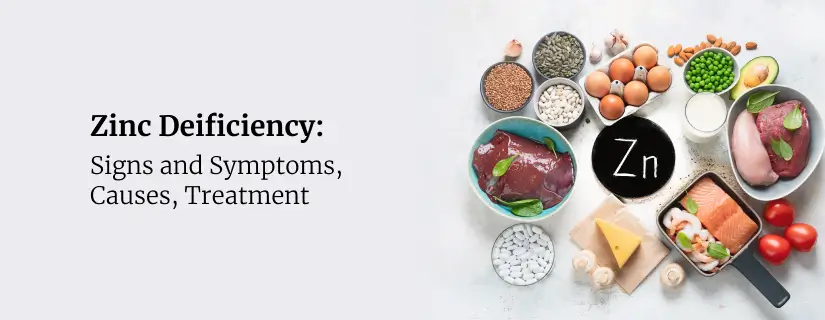
Zinc Deficiency: Signs and Symptoms, Causes, Treatment
9 April 2025
Read More
-
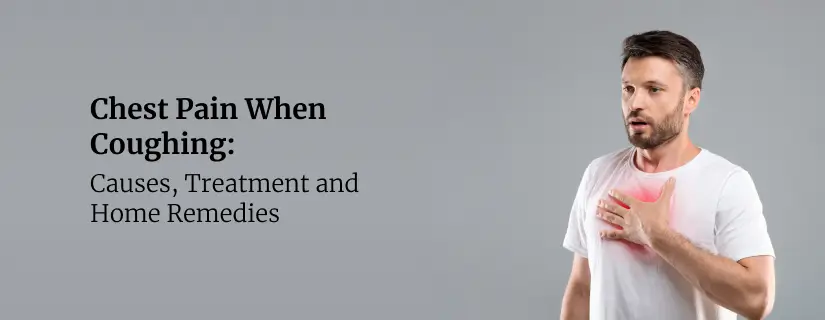
Chest Pain When Coughing: Causes, Treatment and Home Remedies
9 April 2025
Read More
-

12 Health Benefits of Eating Mushrooms
8 April 2025
Read More
-
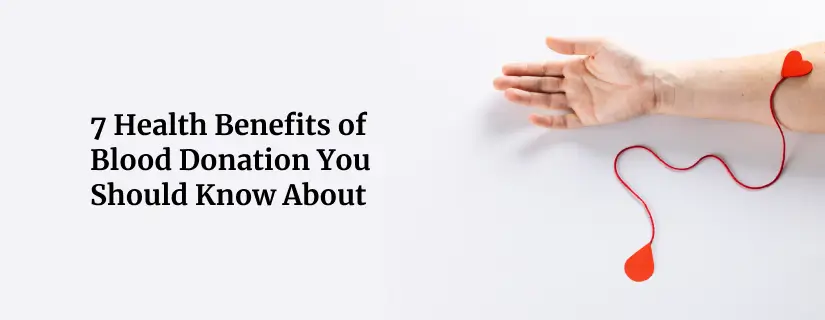
7 Health Benefits of Blood Donation You Should Know About
8 April 2025
Read More
-

Implantation Bleeding Vs Periods: Know the Difference
28 February 2025
Read More
-

Bloating During Ovulation: Symptoms, Causes and Remedies
28 February 2025
Read More
-
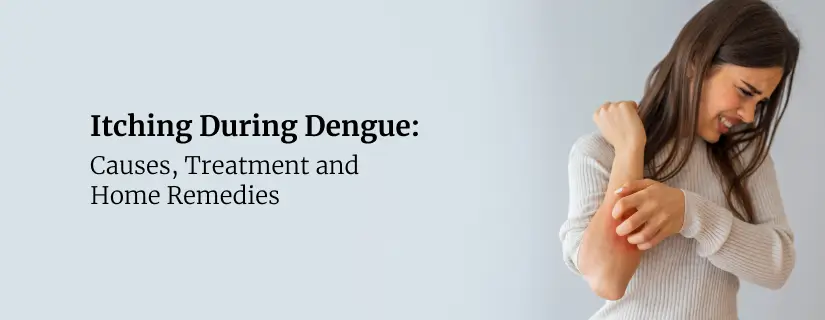
Itching During Dengue: Causes, Treatment and Home Remedies
18 February 2025
Read More
Have a Question?
If you cannot find answers to your queries, please fill out the enquiry form or call the number below. We will contact you shortly.




